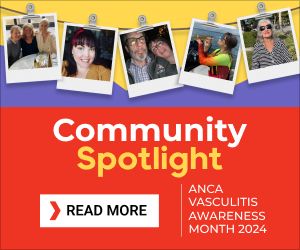Most AAV Patients with Orbital Mass Respond Poorly to Treatment, Study Finds

A large proportion of patients with ANCA-associated vasculitis (AAV) who develop orbital mass, an eye complication, respond poorly to treatment, a study reports.
Future studies need to evaluate the use and effectiveness of combination therapies for the subgroup of patients that are more likely to develop this condition, according to the researchers.
The study, “Orbital mass in ANCA-associated vasculitides: data on clinical, biological, radiological and histological presentation, therapeutic management, and outcome from 59 patients,” was published in the journal Rheumatology.
AAV is a rare disease characterized by inflammation of small blood vessels and can lead to life-threatening complications. There are several subtypes of AAV including granulomatosis with polyangiitis (GPA), microscopic polyangiitis (MPA), and eosinophilic GPA (EGPA).
Between one-third and half of AAV patients experience eye complications, more commonly occurring in patients with GPA. One particular type of eye complication, called orbital mass, develops in about 15% of GPA patients.
The orbit refers to a cavity that contains all the structures necessary for eye function and the bony architecture that encases them. Orbital mass is a space-occupying lesion in and/or around the orbit.
An orbital mass can occur either before or after a patient is diagnosed with AAV. It usually only involves one eye. However, in about 30% of cases, patients will have orbital mass in both eyes.
Generally, orbital mass develops due to cell infiltration from the ear, nose, and throat (ENT) or cells from the orbit itself. If left untreated, orbital mass can have serious consequences and “be responsible for blindness due to optic nerve compression,” according to the researchers.
However, at this point, orbital mass remains a challenge to treat. Because most patients with orbital mass respond poorly to conventional AAV therapy, invasive surgical procedures may be necessary.
Most studies conducted to date on the treatment of orbital mass in AAV patients were done before the approval of Rituxan (rituximab), which has dramatically improved the management of AAV.
Therefore, researchers set out to a conduct a nationwide retrospective study of French AAV patients with orbital mass to gain further insight into the clinical and biological characteristics of patients after the introduction of Rituxan.
The study enrolled 59 patients, including 56 patients with GPA, two with EGPA, and one with MPA.
Orbital mass affected only one eye in 80% of patients. Additionally, as described in previous studies, the vast majority of patients demonstrated ENT involvement.
All but one patient received glucocorticoids (a type of steroid hormone used to fight inflammation), alone or in combination with immunosuppressive agents, as first-line therapy.
Cyclophosphamide was the most common immunosuppressive agent, used in 23 patients, but Rituxan was used in 11 patients. While 52% of patients receiving cyclophosphamide responded to treatment, responses were seen in 91% of those on Rituxan.
In total, 27 patients required a second-line therapy due to either a relapse of the disease (59%) or because they were non-responsive to treatment (41%).
Regarding outcomes, 28% of patients experienced some degree of visual impairment and 17% had definitive blindness. As expected, complications due to orbital mass were more frequent among patients who had refractory disease (i.e. non-responsive to treatment).
When analyzing characteristics of patients who were refractory to treatment, the researchers found that these patients were more likely to be positive for PR3-ANCA (a type of antibody), have vision loss, and develop contiguous pachymeningitis, which is a rare illness characterized by a thickening of the intracranial dura mater (a thick membrane that surrounds the brain and spinal cord).
“Current therapeutic approaches provide disappointing results, and our findings suggest that treatments should be probably stratified according to ANCA positivity, initial severity and pathological features. Also, using more aggressive combination therapies should be evaluated in the future,” the researchers concluded.






